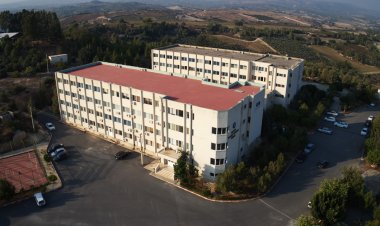An Investigation on Effective Atomic Numbers and Mass Attenuation Coefficients of Some Bioactive Glasse
An Investigation on Effective Atomic Numbers and Mass Attenuation Coefficients of Some Bioactive Glasse Kılıcoglu, Ozge A bioactive material is known as a natural or man-made material that prompts a specific biological response from the body such as bonding to tissue. They have numerous applications in the repair and reconstruction of diseased and damaged tissue, and tissue and hard tissue (bone) re-engineering. In this study, we have evaluated the same gamma-ray shielding parameters such as mass attenuation coefficient (μ/ρ), effective atomic number (Zeff), half value layer (HVL), mean free path (MFP) for selected bioactive glasses. The shielding effectiveness of the selected glasses is found comparable each other. Effective atomic number (Zeff) is convenient parameters used to characterize the radiation response of a multi-element material in the technical and industrial applications, radiation shielding design, absorbed dose. Thus, it is very significant to choose accurate method to determine this parameter unambiguously. In the present study, effective atomic number of different type of material has been calculated by using calculation method for total photon interaction in the energy region of 1 keV to 100 GeV. The results obtained from this study show that effective atomic number depends strongly on the chemical composition of the interaction material in the lower as well as higher energy region, but in the intermediate energy region, the chemical composition dependence becomes very weak. This result can be interpreted that an increase in P2O5 content in the composition of bioactive glasses results as an in increase of bioactivity of that particular materials. Therefore, this study underlines the finding that bioactive glasses would be potential biomaterials for biomedical applications.

An Investigation on Effective Atomic Numbers and Mass Attenuation Coefficients of Some Bioactive Glasse Kılıcoglu, Ozge A bioactive material is known as a natural or man-made material that prompts a specific biological response from the body such as bonding to tissue. They have numerous applications in the repair and reconstruction of diseased and damaged tissue, and tissue and hard tissue (bone) re-engineering. In this study, we have evaluated the same gamma-ray shielding parameters such as mass attenuation coefficient (μ/ρ), effective atomic number (Zeff), half value layer (HVL), mean free path (MFP) for selected bioactive glasses. The shielding effectiveness of the selected glasses is found comparable each other. Effective atomic number (Zeff) is convenient parameters used to characterize the radiation response of a multi-element material in the technical and industrial applications, radiation shielding design, absorbed dose. Thus, it is very significant to choose accurate method to determine this parameter unambiguously. In the present study, effective atomic number of different type of material has been calculated by using calculation method for total photon interaction in the energy region of 1 keV to 100 GeV. The results obtained from this study show that effective atomic number depends strongly on the chemical composition of the interaction material in the lower as well as higher energy region, but in the intermediate energy region, the chemical composition dependence becomes very weak. This result can be interpreted that an increase in P2O5 content in the composition of bioactive glasses results as an in increase of bioactivity of that particular materials. Therefore, this study underlines the finding that bioactive glasses would be potential biomaterials for biomedical applications.

 Bilgi
Bilgi 















